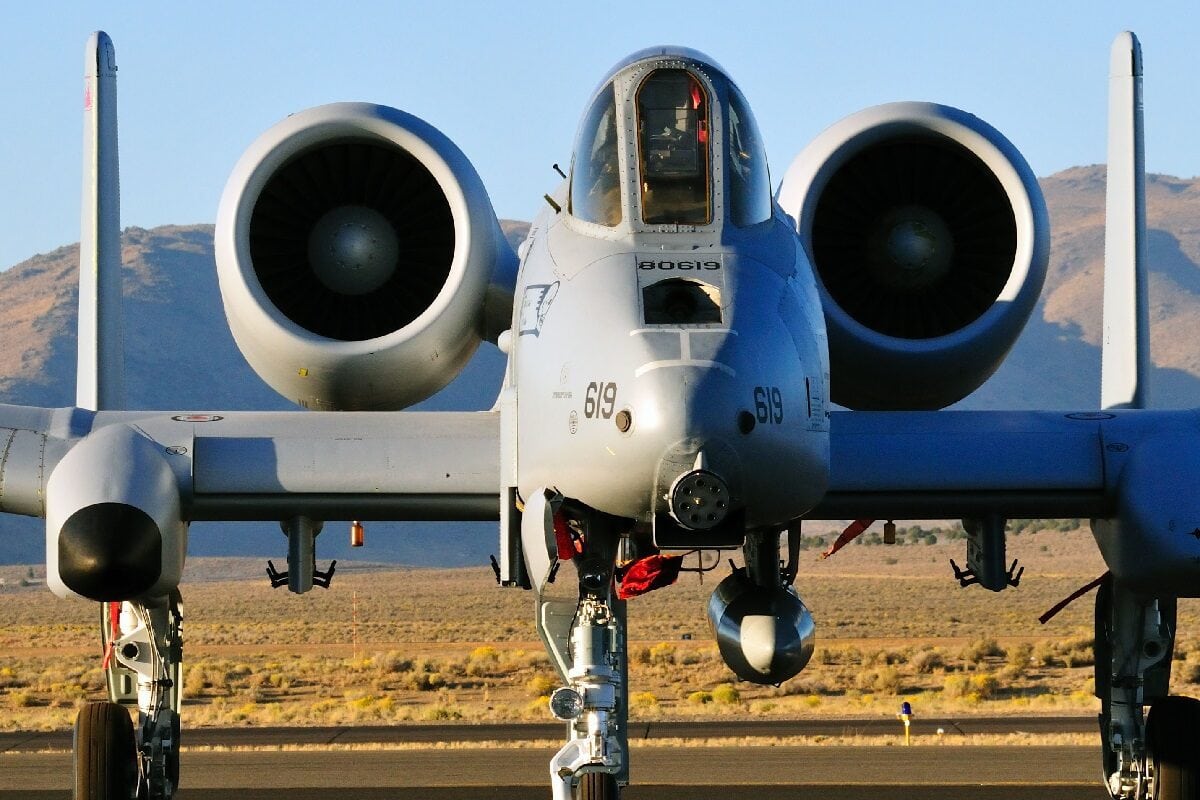On Thursday, four Fairchild Republic A-10 Thunderbolt IIs and two C-146A Wolfhound special operations transport planes landed and took off on Michigan State Highway M-32. The aircraft didn’t make an emergency landing, and authorities had closed the highway as a part of Exercise Northern Strike 21-2, which is one of the Department of Defense’s (DoD’s) largest reserve component readiness exercises.
Northern Strike 21-2, which is taking part in Northern Michigan, began on July 31 and will run through August 14.
Michigan State Police announced that the highway would be closed west of the city of Alpena for part of the day for the scheduled test landing of the aircraft. The public information office for the state police shared video of an A-10 on the highway on social media, noting, “You don’t see this everyday on a Michigan highway.”
The aircraft were from Michigan National Guard’s 127th Wing from Selfridge Air National Guard Base; the United States Air Force’s 355th Wing, Davis Monthan Air Force Base (AFB), Arizona; and the Air Force Special Operations Command, Duke Field, Florida.
Large Training In Upper Michigan
Approximately 5,100 participants from various states and countries have converged at the National All-Domain Warfighting Center (NADWC), which encompasses the Camp Grayling Maneuver Training Center and the Alpena Combat Readiness Training Center. The combined training area consists of 148,000 acres of maneuver space and more than 17,000 square miles of special-use airspace. Northern Strike 21-2 will allow personnel to conduct training on expeditionary skills, command and control, sustainment, and joint integrated fires.
The Michigan National Guard began hosting the military training event in 2012, and since that time it has grown into a joint, multinational exercise, where participating units conduct scenario-based, full-spectrum readiness training and complete mission essential tasks.
“We are excited to once again host the annual Northern Strike exercise,” said U.S. Army Maj. Gen. Paul Rogers, adjutant general, and director of the Michigan Department of Military and Veterans Affairs. “This exercise serves as a great opportunity for our multicomponent, multinational, and interagency partners to develop into efficient, joint warfighters. Training like we may be called on to fight is critical in preparing to confront a near-peer adversary in the future.”
This year’s exercise featured multiple United States Army components, Air Force active duty, and Guard personnel, as well as United States Navy and United States Marine components. In addition, units from the United Kingdom, Latvia, and Liberia were expected.
“Michigan’s NADWC is uniquely postured to provide ample training airspace and facilities to accommodate training for the future high-end fight,” said U.S. Air Force Brig. Gen. Bryan Teff, Michigan Air National Guard adjutant general for air. “Michigan is integral to the joint fight and future warfighter. The joint force cannot execute without training as we fight.”
Highway Closures
It isn’t uncommon for highways to be closed in the summer months, but never before was one closed for such an exercise. The road was closed by the Michigan National Guard, in coordination with the Michigan Department of Transportation (MDOT) and local partners for about five hours.
“This is believed to be the first time in history that modern Air Force aircraft have intentionally landed on a civilian roadway on U.S. soil,” said U.S. Air Force Col. James Rossi, Alpena Combat Readiness Training Center commander in a statement. “Our efforts are focused on our ability to train the warfighter in any environment across the continuum so our nation can compete, deter, and win today and tomorrow.”
MDOT had to remove some power lines as well as road signs in advance of the exercise, but did not have to make any modifications to the road.
The A-10 Thunderbolt II, which is affectionately nicknamed the “Warthog” by pilots, entered service in 1977. The single-seat, straight wing plane, which is powered by twin TF-34-GE-100 turbofan engines, was specifically designed to be able to operate from austere locations. It has exercised the ability to do so in the past in conjunction with NATO partners.
In June 2018, A-10s from the Michigan Air National Guard conducted highway landings in Estonia as part of the multinational exercise Saber Strike.
During the Cold War, fixed-wing aircraft did occasionally train to operate from civilian airfields and highways in Europe. There is a long-standing myth that U.S. interstates, which were built during the early Cold War, were required to “be straight” for one mile out of every five so that they could be used as airstrips.

Image: Creative Commons.
However, that is untrue. The Federal Highway Administration (FHA) has for years tried to debunk the myth. But given that an A-10 just landed one will surely convince some that highways were designed for use by military aircraft.
Peter Suciu is a Michigan-based writer who has contributed to more than four dozen magazines, newspapers and websites. He regularly writes about military small arms, and is the author of several books on military headgear including A Gallery of Military Headdress, which is available on Amazon.com.

